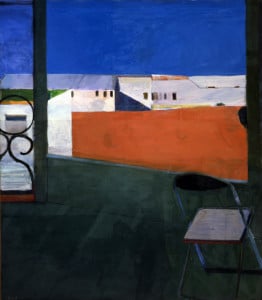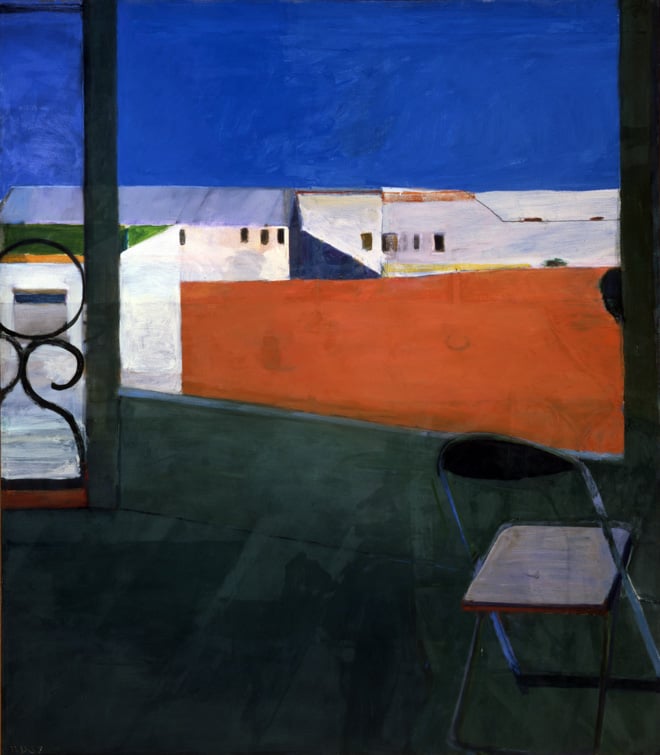
“Figuration/Abstraction” is built on the notion of opposites, pitting representational art and painstaking realism against the whimsical, open-ended aesthetic of abstraction. The exhibit highlights works from the Cantor’s permanent collection, sprawling across the walls of the expansive Freidenrich Family Gallery. The exhibit asks us to note the stylistic differences between the works as well as the historical and personal contexts that motivated these choices.
The representational works on display generally deal with the human figure, such as Duane Hanson’s hyperrealistic resin sculpture “Slab Man” and Alice Neel’s more traditional figure painting titled “The Arab.” The most iconic of these works is perhaps Chuck Close’s “Zhang Huan II,” a silkscreen portrait of a man executed in Close’s signature style. Close carves out values of the face using small, quilt-like squares of paint daubs.
Making my way through the exhibit, the pieces slowly “devolved” from representation to more freeform abstraction.
The abstract works featured in “Figuration/Abstraction” range from cubist works to more contemporary pieces, wherein artists decompose complex scenes into bare-bones shapes and blocks of solid color.
In the exhibit, there appear to be two schools of abstraction at play. The first is best described as freeform abstraction, wherein the marks are loose and reveal the physicality of making. Such works include the ink splatters of Richard Serra’s 1972 piece “Balance” and the tumbling chalk cubes that make up Mel Bochner’s “Onset of Turbulence (#5).” The second is characterized by a more mechanical, geometric style. Among these works is Frank Stella’s “Quathlambda II,” which comprises stacked triangular shapes in parallel to create an almost hypnotic effect.
Bay Area native Richard Diebenkorn is portrayed in the exhibit as a bridge between the two styles, as the artist often jumped between figuration and abstraction. His piece “Window” perhaps best represents this dichotomy. Here, Diebenkorn clearly represents objects like buildings and a chair, but constructs them from brightly colored shapes and angles. Viewed from afar, the painting seems to dissolve into an abstract cacophony of shapes and color.
Richard Diebenkorn’s “Ocean Park No. 94” leans more on the side of abstraction. Reminiscent of its counterpart in the Anderson Collection, “Ocean Park No. 60,” the piece employs line and color in a way that creates a powerful focal point and evokes the atmosphere of Diebenkorn’s beachfront locale, the Santa Monica Bay.
Frank Stella’s “Maxon’s Island,” an eye-popping, fluorescently-colored tangle of irregular shapes, closes off the exhibit in spectacular fashion. “Maxon’s Island” is an explosion of Stella’s imagination. The piece has a childlike, petulant quality to it, thanks to Stella’s unique choice of color and media — a not-so-subtle reminder of the limitlessness of abstraction as expression.
“Figuration/Abstraction” is on view at the Cantor Arts Center until Aug. 29, 2016.
Contact Eric Huang at eyhuang ‘at’ stanford.edu.
